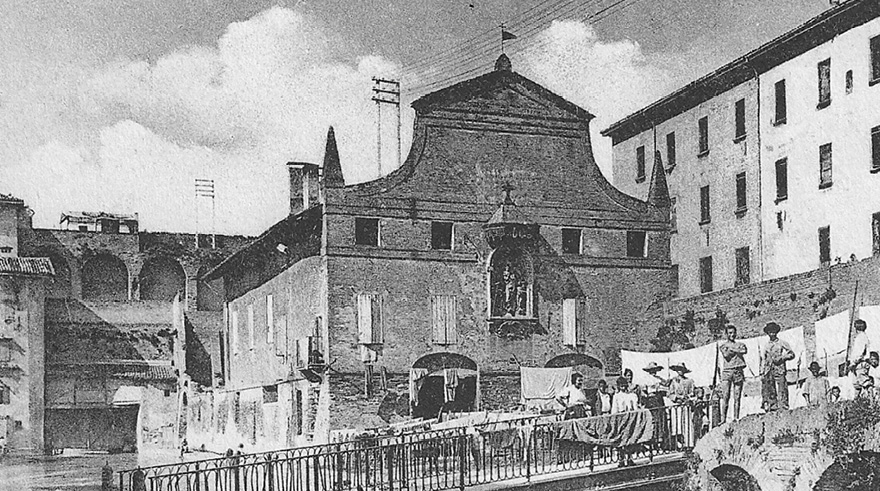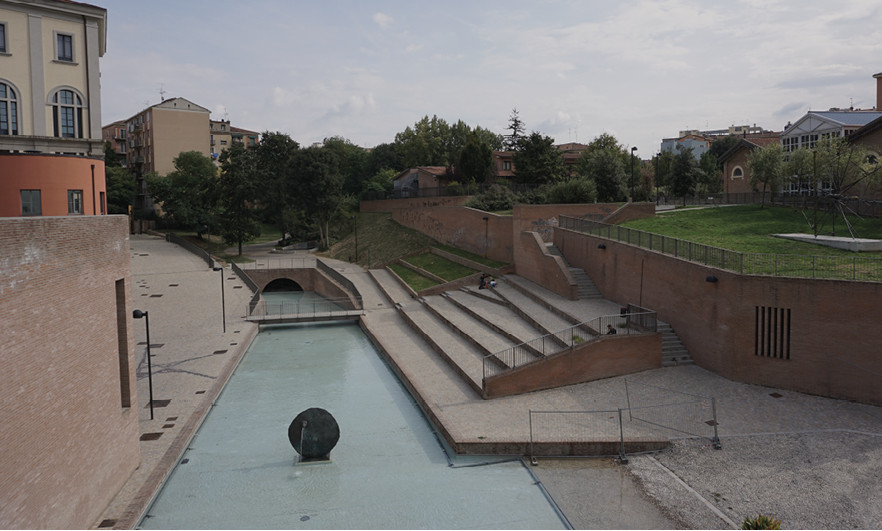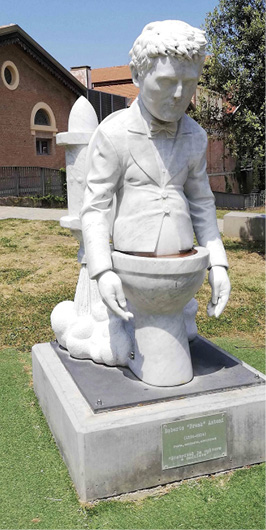During ten days in June, the Cavaticcio Park has hosted since 2005 the Biografilm Festival, a film festival that celebrates life stories through documentary and fiction works, both Italian and international. With the aim of promoting inclusive policies through the dissemination of film culture, the Festival has hosted over the years personalities such as Amy Adams, Claudia Cardinale, Pierce Brosnan and Francis Ford Coppola.

The park, thanks to its evocative location, has become a reference point of the city’s summer entertainment as it is located in that pole that develops between MAMbo - Museo d'Arte Moderna, Cassero LGBT Centre - Headquarters of the Arcygay provincial committee of Bologna, and Cineteca, with which it collaborates in full spatial and intentional synergy. In fact, especially during the warm season, the precious strip of green that stretches for only a handful of metres is filled with events, meetings, and concerts. The origins of the name of the park, created in 1983, are uncertain. Indeed, it may be attributable to the branch of the Rhine Canal above which it stands. It may also be that, in agreement with the Accademia della Crusca, it stands for topsoil or mud extracted from an excavation. On this land whose canal, making a drop of 15 metres, once provided a source of energy to power factories and mills, stood the old city port.

The Port was established in the mid-1500s to cope with the increasing river trade that had developed on the canal network of the Reno River and Savena Creek from the hills rising above the city. Bologna was directly connected to the Po River, which supplied it with water and mechanical power. The area that stretches adjacent to it was precisely renamed Porto to commemorate its origins, which enabled the capital of Emilia to achieve leadership in the textile industry in Italy. Beginning in 1934, the surrounding buildings were demolished, except for the Salara, the salt warehouse, which houses the present Cassero. By the 1950s, most of the canals were buried, including the Cavaticcio. If one were to try to imagine the sea in Bologna, it would be in this strip of green where a small urban beach with a few umbrellas and deck chairs stands next to the dock, giving the illusion to the less fortunate who don’t get to go outside the city walls that they are spending the day at the beach. The park is thus an important reference for the city’s economic development, first commercial, and then artistic and cultural.

Since 2011, the layout of the garden has changed as it has been transformed into a small open-air art gallery through continuous interaction with the surrounding structures: starting from the Anna Magnani Square you can find the installation by the Zimmer Frei collective called Casa Grande 1. Going further into the garden, it is possible to visit the remains of the partisan base of the battle left from Porta Lame. In 2018, a monument was dedicated to Roberto ‘Freak’ Antoni, a leader of the Skiantos, a famous Bolognese group, who died in 2014. It depicts him sitting on a toilet with a rocket behind him ready to shoot into the sky. The memorial plaque reads, ‘Poet, singer and writer. He distributed culture in spades.’ There is also the imposing wheel by Giuseppe Maraniello: an installation resembling a huge spider web with tiny details and ancient archaic objects inside. Going towards the canal instead, we run into Mimmo Paladino and his Shield with Fountain. A 1996 statue depicting the figure of a warrior and the head of an animal emerging from the water. Arnaldo Pomodoro’s Totem, however, is located before the exit, in a more appropriate location than the original Piazza Verdi. The park is thus an integral part of the city’s cultural offerings. Although it has retained its initial layout, it has been transformed by following the course of the canal that shaped it.




.png)